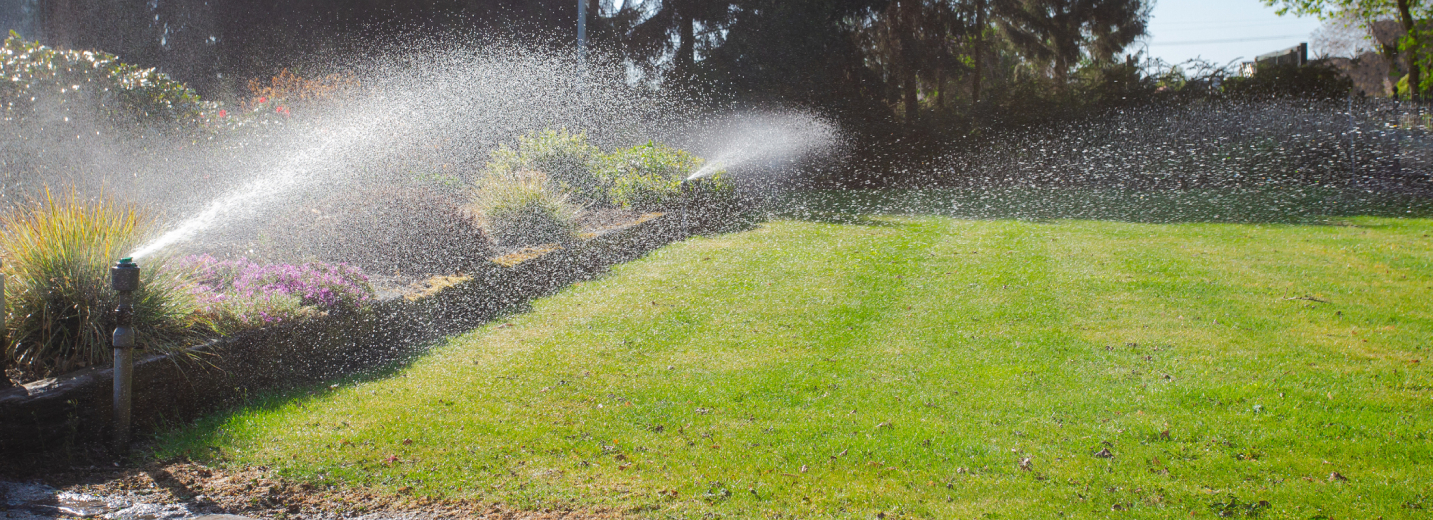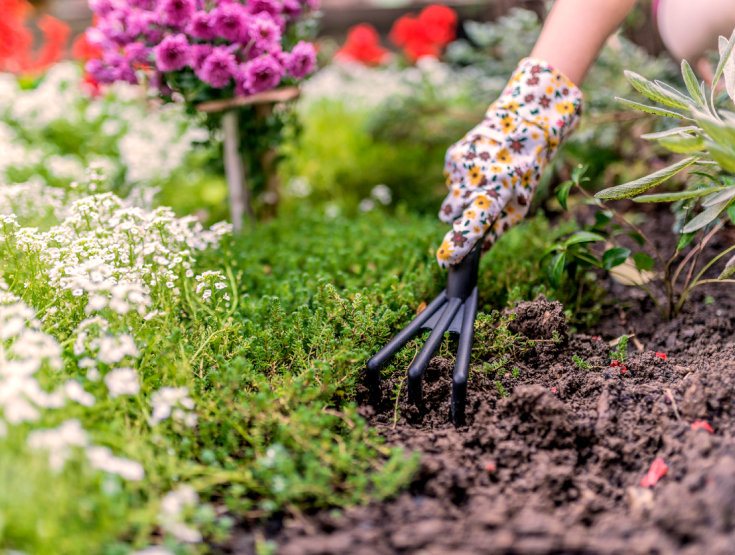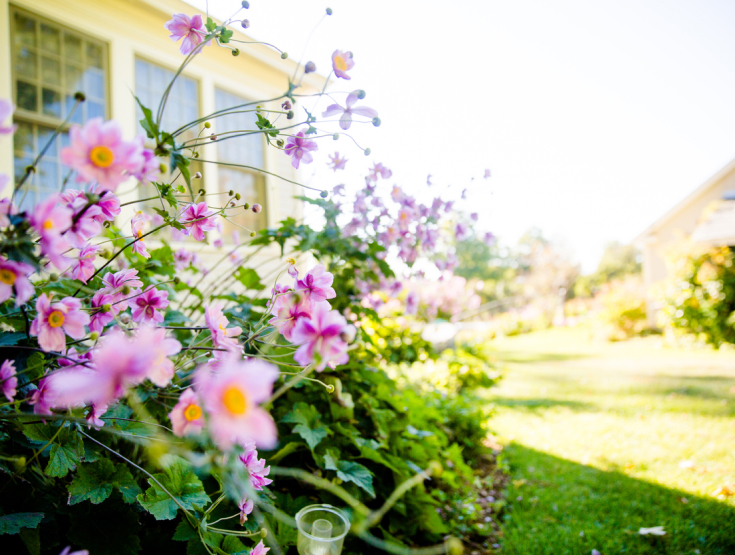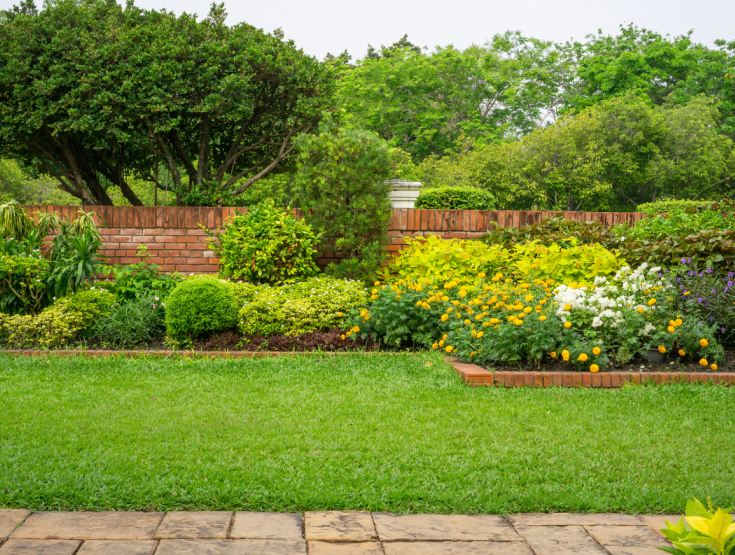Step 1: Rake and Clear Dead Grass
Raking is one of the first steps in preparing your lawn for spring. It helps remove debris like dead leaves, twigs and matted grass that can block sunlight and prevent air from reaching the soil. This process encourages new growth and reduces lawn diseases by eliminating thatch buildup.
Importance of removing debris:
- Allows sunlight and air to reach grass blades.
- Prevents lawn disease and reduces the chance of fungal infections and mold.
- Improves air circulation and stimulates new grass growth.
Step 2: Test and Improve Your Soil
Soil testing is helpful for understanding the nutrient levels and pH of your lawn. Without this knowledge, applying fertilizers might not be as effective. Soil that's too acidic or alkaline can limit grass growth, so adjusting the pH helps the roots absorb nutrients more efficiently.
- Identify nutrient deficiencies: Testing reveals where your soil lacks phosphorus or potassium and recommends how much nitrogen your lawn needs depending on its grass type.
- Correct pH imbalances: Use lime to raise pH (if too acidic) or sulfur to lower it (if too alkaline).
- Tailor fertilization: This helps you select the best fertilizer based on soil needs.
Step 3: Aerate the Lawn if Needed
Lawn aeration is a crucial step in maintaining a lush, resilient lawn. It involves creating small holes in the soil to improve air, water and nutrient penetration. This process is especially beneficial for compacted soil, which can restrict root growth and lead to a weak lawn.
Consider Your Grass Type
Your grass type and local climate play a key role in determining the best lawn care schedules. Grass is generally categorized into two types:
- Cool-Season Grasses: Kentucky Bluegrass, Perennial Ryegrass, and Fine and Tall Fescue grow best in cooler temperatures.
- Warm-Season Grasses: Bermudagrass, Centipedegrass, Zoysiagrass and St. Augustinegrass thrive in warmer climates and go dormant when soil temperatures drop below 50 degrees.
When to Core Aerate
For the best results, aerate your lawn when it is actively growing:
- Cool-season grasses: Aerate in the fall when growth is at its peak.
- Warm-season grasses: Aerate in late spring or summer when these grasses are thriving.
Benefits of Lawn Aeration
- Improves Soil Structure: Enhances water retention and prevents runoff, ensuring grass receives the moisture it needs.
- Encourages Root Development: Strengthens grass roots, making them deeper and more extensive to withstand drought and other stresses.
- Aids in Thatch Management: Helps break down excess thatch, a layer of dead roots and stems that can block nutrients and invite pests.
- Relieves Soil Compaction: Loosens dense soil, allowing air, water, and fertilizer to reach the root zone more effectively.
Step 4: Apply Fertilizer
Spring is the perfect time to start fertilizing, as your lawn is waking up from its winter dormancy. Fertilizer provides essential nutrients for root development and overall growth. Choose a balanced, slow-release fertilizer for steady nutrient delivery throughout the season.
- Use a slow-release fertilizer: Ensures nutrients are provided gradually.
- Choose the right N-P-K ratio: Nitrogen promotes leaf growth; phosphorus helps root development; potassium supports overall health.
- Timing matters: Apply once the grass starts actively growing and the soil has warmed.
- Cool-Season Grasses: Should be fertilized at key points throughout the growing season.
- Warm-Season Grasses: These grasses benefit from regular fertilization when the grass is actively growing.
- Watering: Water your lawn after a fertilizer application to help absorption into the soil.
Step 5: Seed and Overseed
Seeding and overseeding are critical for cool-season grasses to promote a thick, lush lawn, and is one of our top spring lawn care tips. If you have bare spots or thin areas, late summer or early fall is an ideal time to plant grass seed. Seeding in early spring is also ideal, but make sure to give your seedlings enough time to establish before the summer heat.
- Overseed bare spots: Fill in areas that are sparse or damaged from winter.
- Enhance lawn density: Thicken up thin areas to promote a healthier lawn.
- Choose the right grass type: Match your grass seed to your region’s climate for better success.
Remember, don’t overseed warm-season grasses. If you need help identifying between cool-season and warm-season grasses, here’s a quick guide:
Quick Grass Type Guide
Identify Your Grass Type:
- Does your grass turn brown in the winter? → It’s a warm-season grass and only needs aeration.
- Does your grass stay green in the winter? → It’s a cool-season grass and benefits from aeration + overseeding.
Cool-Season Grasses (Aeration + Overseeding)
- Types: Kentucky Bluegrass, Fescue, Perennial Ryegrass
- Best Time: Late summer to fall
- Frequency: Once per year
Warm-Season Grasses (Aeration Only)
- Types: Bermudagrass, Zoysiagrass, St. Augustinegrass, Centipedegrass
- Best Time: Late spring to early summer
- Frequency: Once per year
Following this simple guide will keep your lawn thriving year-round!
Step 6: Weed Control
Weeds can quickly take over a lawn if not managed early. Using the right weed control strategy at the right time helps maintain a healthy, thriving lawn.
Pre-Emergent Weed Control
Pre-emergents control newly germinated weed seeds by stopping them before they even appear. These should be applied before the soil temperature reaches 55°F, as this is when weed seeds begin to sprout. Common weeds like crabgrass can be effectively controlled with this method.
Tip: Don’t use a pre-emergent weed control if you’re overseeding, as this will kill your new grass seeds alongside the weed seeds.
Post-Emergent Weed Control
Post-emergents target existing weeds that have already sprouted, helping to eliminate them and prevent further spread. Choose a product designed to tackle the specific weeds in your region for the best results.
Timing Matters
- Cool-season lawns: Apply weed control treatments when weeds are actively growing in the spring.
- Warm-season lawns: Apply in early spring, with additional treatments as needed throughout the growing season.
Step 7: Mow for Spring
Proper mowing is key to a healthy lawn. For the first mow of the season, trim your grass slightly shorter — about ½ inch shorter than the recommended growing-season height. This helps remove any dormant grass and encourages green-up. After the first mow, maintain a height of 2.5 to 3 inches for cool-season grasses to promote strong, thick growth that resists drought and disease.
- First mow timing: Cool-season grasses can be mowed after the snow cover melts, typically in early spring. Warm-season grasses should be mowed once they start actively growing, usually by late March.
- Ideal mowing height: 2 to 4 inches for cool-season grasses, 1 to 3.75 inches for warm-season grasses.
- Avoid cutting too short: Cutting too low can stress the grass and encourage weed growth.
- Mow regularly: Frequent mowing helps maintain a dense, healthy lawn. However, it’s important to avoid cutting grass too short. A good rule of thumb is to not remove more than 1/3 of the grass blade while mowing.
Grasscycling Tip: Leave your grass clippings on the lawn! This simple practice:
- Adds nutrients and natural fertilizer.
- Improves soil health and organic matter.
- Conserves water (clippings are 75-85% water).
- Reduces landfill waste and transportation energy.
- Keeps your lawn greener and healthier.
Step 8: Watering Tips
Watering is crucial for your lawn’s growth, especially during early spring. Inadequate watering can cause grass to dry out, while over-watering can promote disease. Aim to water deeply but infrequently for the best results.
- Water early in the day: Early morning watering prevents disease and reduces evaporation.
- Water deeply but less often: Ensure grass roots are well-hydrated by providing 1 to 1.5 inches of water 3 times per week depending on the weather.
- Adjust based on weather: Reduce watering during rainy periods and increase during dry spells.
Step 9: Check for Lawn Disease
Lawn diseases can damage your grass if not treated promptly. Look out for symptoms like yellow or brown patches, mold or unusual growth patterns. Early detection and treatment can prevent the disease from spreading.
- Look for signs of disease: Yellowing, patches of dead grass or unusual growth.
- Use fungicides appropriately: Treat infected areas with the right product to eliminate disease.
- Maintain lawn health: Healthy grass that is properly fertilized is less susceptible to disease, so proper care is essential.
Step 10: Professional Lawn Care Services
If you want an expert, trusted lawn care services provider, TruGreen can take the stress out of lawn maintenance. We offer customized plans that ensure your lawn stays lush and healthy throughout the growing season and all year long.
- Tailored care plans: TruGreen provides personalized treatments for your lawn's unique needs.
- Expert services: Professional, locally curated fertilizers, treatments and care routines.
- Convenience: Let TruGreen handle the heavy lifting so you can enjoy your beautiful lawn without the hassle.


 Branch Finder
Branch Finder
















 Back to all blogs
Back to all blogs

Facebook
X
Youtube
Copy Link
Email